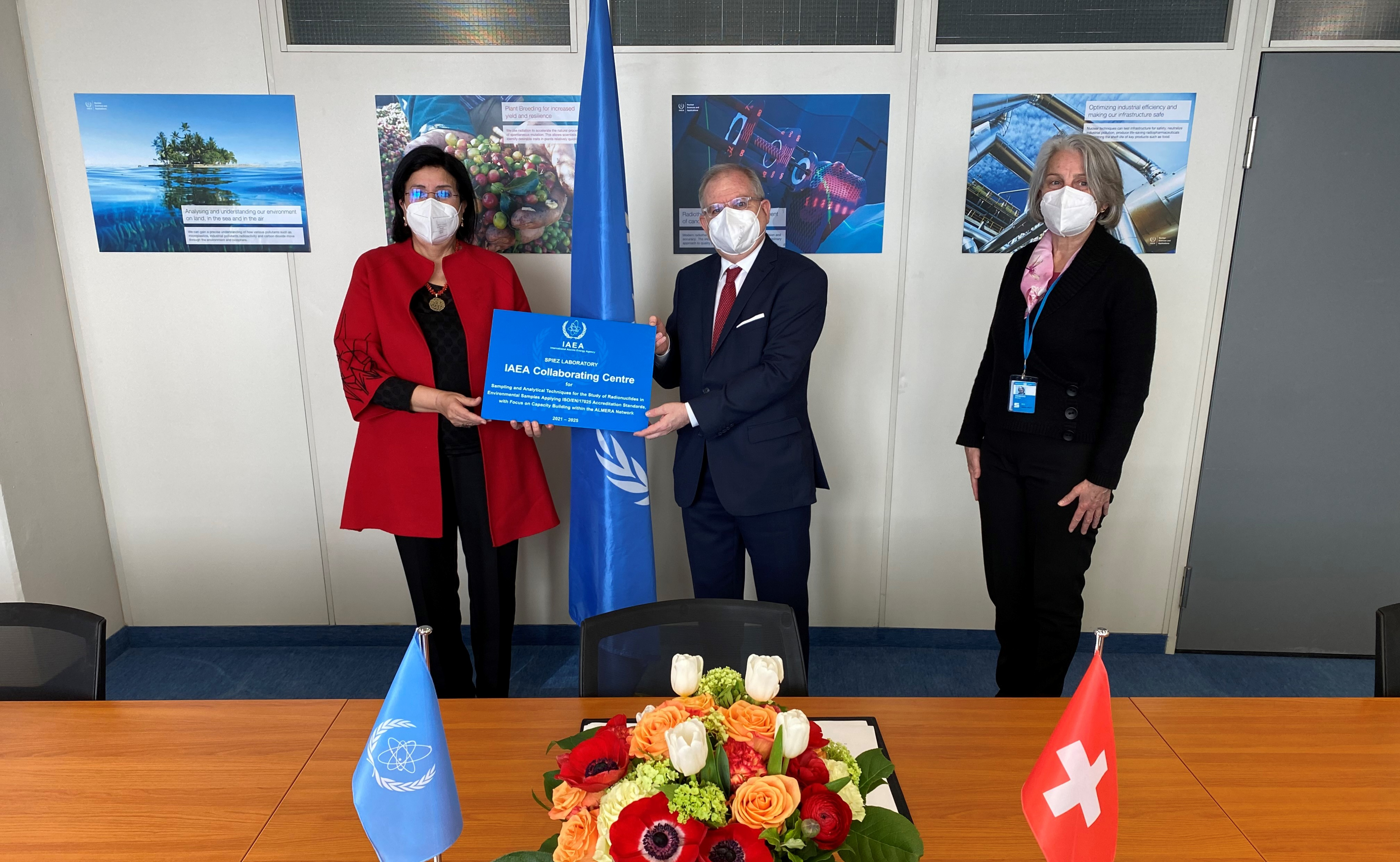The IAEA and Switzerland’s Spiez Laboratory will increase cooperation to boost Member States’ capability to study radionuclides in environmental samples and provide internationally acceptable radioanalytical data – especially critical in case of transboundary releases of radioactivity.
Redesignated today as an IAEA Collaborating Centre until 2025, the research body will also enhance activities of the network of Analytical Laboratories for the Measurement of Environmental Radioactivity (ALMERA) by developing novel radioanalytical methods available to over 190 laboratories across the world.
“Over the past years, new radioanalytical methods were established in the framework of this collaboration,” said Najat Mokhtar, IAEA Deputy Director General and Head of the Department of Nuclear Sciences and Applications. “The Spiez Laboratory’s expertise in nuclear forensics will significantly help the IAEA to enable Member States to respond in a harmonized way to accidental or intentional releases of radioactivity by producing accurate, reliable and timely analysis of environmental samples.”
As Switzerland's leading scientific institution for the protection of the population against nuclear, biological and chemical threats, the Spiez Laboratory is strategically positioned to assist the IAEA in its research and capacity building support to analytical laboratories and networks.
Collaboration between the two organizations will now expand in the area of capacity building to support the quality assurance of radioactivity data collection and analysis in IAEA Member States laboratories. Training programmes on using field measurement techniques, particularly In-Situ Gamma-ray Spectrometry, will be provided to strengthen Member States’ preparedness and response to radiological and nuclear emergencies. Capacity building support on using ICP-MS gamma and alpha spectrometry in environmental radionuclide analysis applying the ISO/EN17025 international quality standards will also be provided through ALMERA network. These R&D and training programmes will enhance national capabilities to rapidly assess the type and level of environmental contamination that play a critical role in the decision making process in the case of a nuclear emergency.
“We are pleased that the designation of Spiez Laboratory has yielded positive results for the work of the Agency,” said Ambassador Benno Laggner, Switzerland’s Resident Representative to the IAEA. “We are confident that the re-designation will provide new opportunities to further strengthen the partnership between Switzerland and the IAEA.”
Providing support worldwide
Spiez Laboratory was first designated as an IAEA Collaborating Centre in 2016. The initial partnership focused on environmental protection and the establishment of radioanalytical methods of the highest standard.
Laboratory’s expertise was instrumental in supporting the work of the IAEA to verify the accuracy of radionuclide monitoring by Japanese laboratories off the Fukushima coast. Samples collected from seawater, sediments and fishery products from coastal waters in front of the Fukushima Daiichi Nuclear Power Plant were sent to the Spiez Laboratory and other labs for detailed testing. The results of this mission confirmed the reliability of data from previously analyzed samples by Japanese laboratories.
Similarly, the Spiez Laboratory has collaborated on developing a national radioactivity monitoring capacity in the Marshall Islands. The samples underwent a detailed radioisotope analysis in Spiez. A full report of the results submitted to the IAEA and the local authorities in the Marshall Islands contributed to a comprehensive surveillance study and data comparison activities.
“This agreement will strengthen our collaboration with the IAEA in enhancing the study of radionuclides in the environment using ISO accreditation standards,” said Marc Cadisch, Director of Spiez Laboratory. “Our cooperation will enhance scientific and technical capabilities in other IAEA Member States.”
IAEA Collaborating Centres
Collaborating Centres are scientific institutions that work together with the IAEA by undertaking original research and development and training relating to nuclear science, technologies and their safe and secure applications. There are currently 47 active Collaborating Centres working on helping Member States reach the United Nations Sustainable Development Goals.

